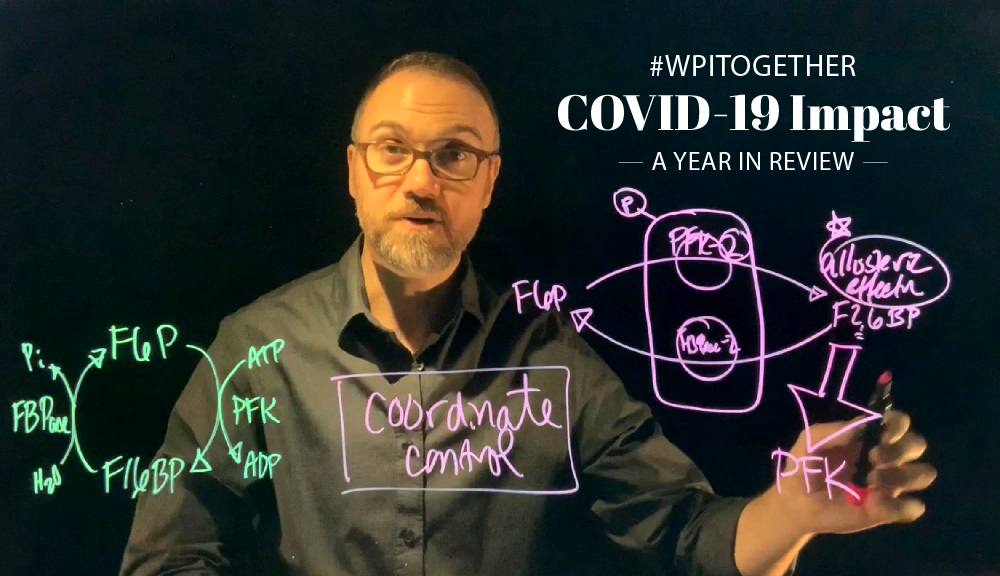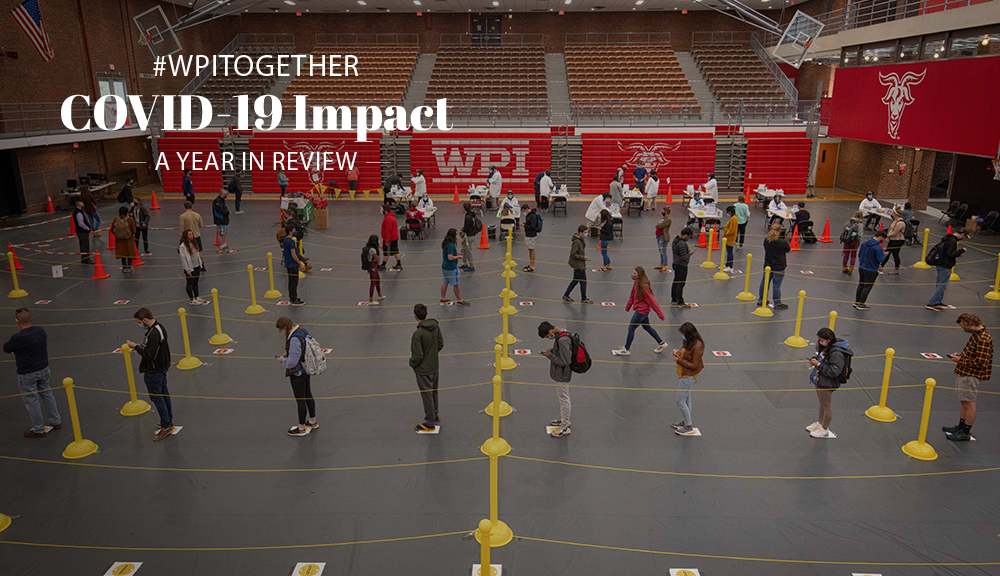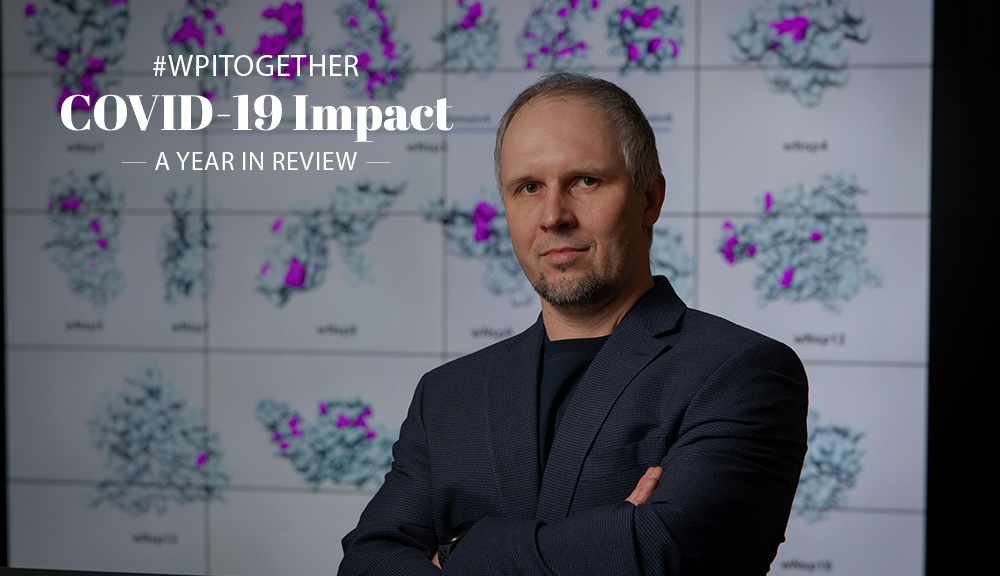Editor’s Note: This is the third installment of a five-part series about how the WPI community remained strong, stayed the course, and innovated during the COVID-19 pandemic.
Part 3: Student Life: How students adapted to a global pandemic that upended everything from projects to artistic performances and commencement.
From taking care of each other, designing solutions to stay connected, and using their talents to re-imagine projects, WPI students made significant impacts on their community during 2020. Those who had planned to travel to project centers found ways to collaborate remotely. A beloved tradition for first-year students — crossing Earle Bridge— went forward but with social distancing. Theater performances were re-imagined. A Lego Minecraft replica of WPI provided the backdrop for a commencement ceremony, and when some students fell sick or quarantined because of their exposure to the virus, others stepped up to comfort them with care packages.
Students who had planned to travel to Romania for Interactive Qualifying Projects during the spring found a way to explore the country’s culture remotely.
Interactive Media & Game Development students built a virtual WPI for their commencement and collected diplomas amid lightning, fire, and the occasional potato.
No in-person cabaret? No problem! Students created a virtual show with songs from the heart.
Student teams focused their projects close to home to evaluate the university’s COVID-19 testing process and make recommendations for improvements.
Mindful of the emotional toll of the pandemic, InterVarsity Christian Fellowship partnered with a local church to comfort students in quarantine and isolation.

Local and national media captured snapshots of how the WPI community learned and adapted during the COVID-19 pandemic:
- WBZ News Radio 1030 – April: WPI Students are Building Engines at Home
- Worcester Telegram & Gazette – Aug. 30: WPI Freshmen Keep Up Tradition with Annual Bridge Crossing
- National Park Service – Nov. 6: Turning Obstacles into Opportunities, Glacier National Park
Coming tomorrow: WPI researchers keep exploring and innovating during the pandemic, and even create one of the earliest 3D maps of the novel coronavirus.
-Colleen Wamback, Lisa Eckelbecker



